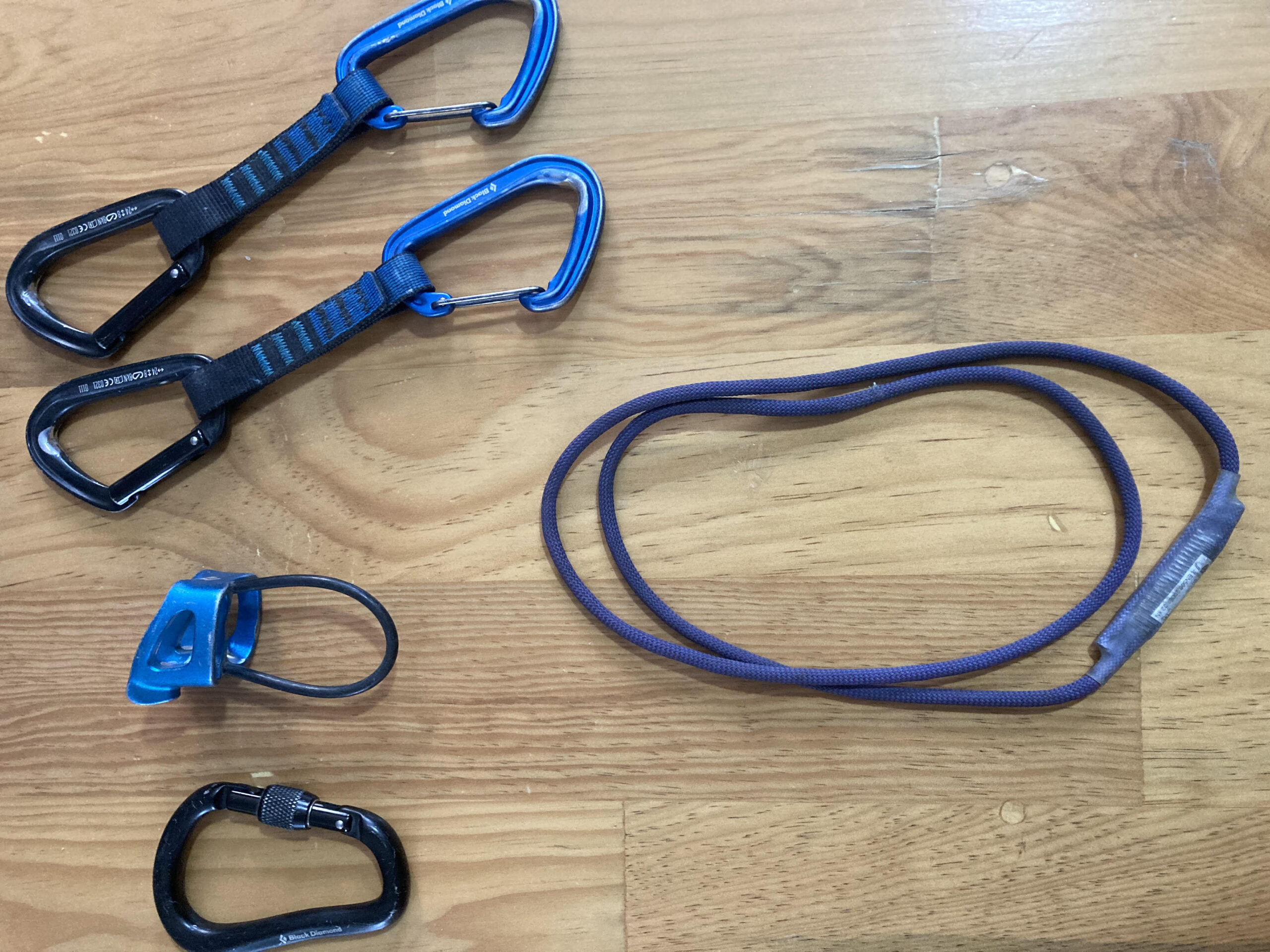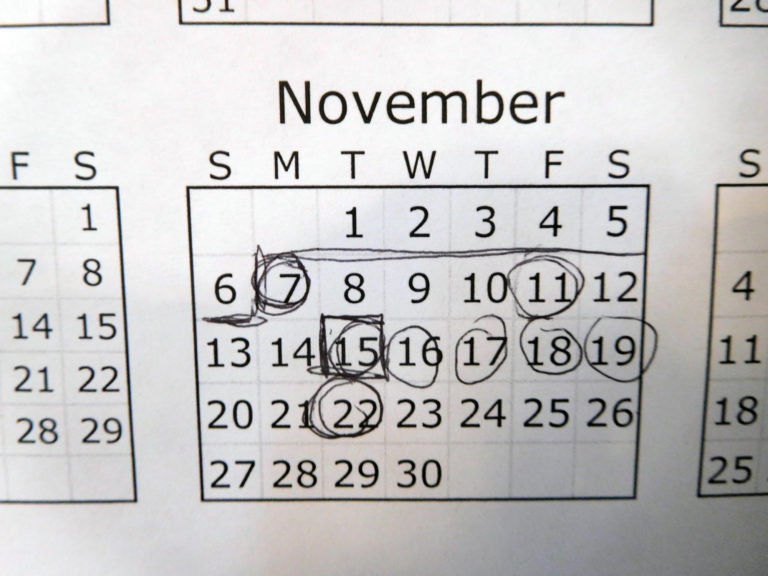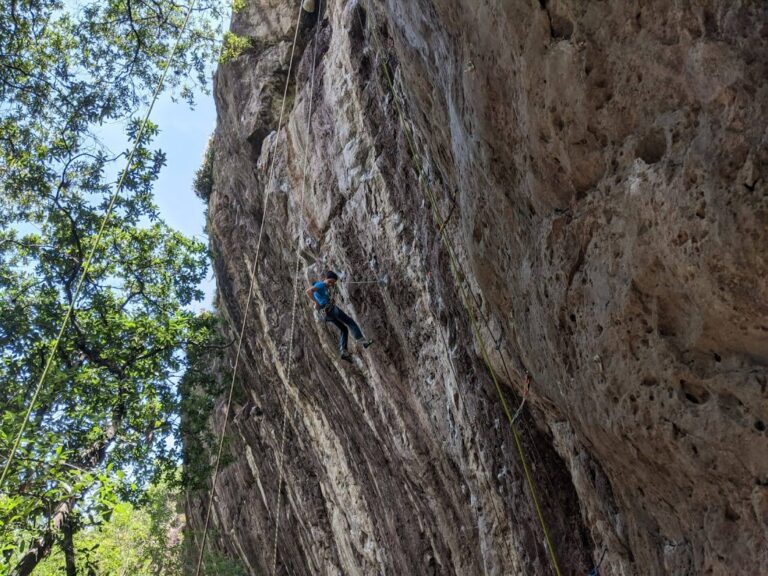2024 Prusik Crash Course

Last Updated on: 23rd January 2024, 01:40 pm
If you’ve been climbing outdoors for a bit you’ve probably heard the term prusik.
A prussik is a knot that climbers used for a few purposes. It can be used for ascending a fixed rope, taking the load off of a rope, and backing up a rappel, among other things. Most beginner climbers most commonly use prusiks to back up their repel.
While a prusik is a type of knot, often times people are referring to a prusik cord — a piece of rope or cord that is sewn together into a loop.
What is a prusik?
Used in mountaineering, rope rescue, climbing, canyoneering, and more, the Prusik knot is a versatile tool that can help you stay safe and secure in a variety of situations.
While rappelling or lowering off a climb, they can act as an autoblock to hold a climber in place when they need to use both hands or in the event of an emergency. Climbers can use two prusiks along a fixed rope to ascend or descend. The lower knot acts as a foot loop while the top one is controlled by the hands. You can also attach a carabiner to the loop of the knot to attach to your harness or another person in a rescue mission.
The prusik knot
Used in mountaineering, rope rescue, climbing, canyoneering, and more, the prusik knot is a versatile tool that can help you stay safe and secure in a variety of situations. If you do any type of multi-pitching or technical climbing, it is a must learn to keep you and your climbing partner safe.
How to tie a Prusik knot
Begin by tying the ends of your rope together so that you have a loop to work with. Create a double fisherman’s knot by coiling one end of the rope twice around the other piece of the rope lying next to it. There should be an X formation on one side and two diagonal lines on the other side. Pass the free end back through the coils under the X so that it forms a knot. Repeat this process for the other end of the rope.
With your static loop created, you can set up a Prusik hitch around the line you’re attaching to. Put the loop behind the line and pull the double fisherman’s knot through the loop. Wrap on the inside of the loop three times and pull through tightly. At this point, you should have a line running through the knot, and the knot should look like three lines, the pulled-through loop, and three more lines. The back should look like six vertical lines running next to each other with a long horizontal line on top.
How a prusik knot works
Prusik knots are designed to move freely on a line as you climb. When they are not put under intense force or friction, they can slide up and down with ease. If the end of the rope is pulled suddenly, the friction of the knot will create enough tension to hold the load in place (you, a bag, another person, etc.).
Prusik hitches are bidirectional, meaning that they can move forward or backward along the line without any issues. This is different than unilateral knots that are designed to only go in one direction.
Choosing the right cord
Choosing the right rope for your Prusik knot is essential. If you use a rope that is too thin, it will tighten easily along the line and will be difficult to move freely. If you use a rope that is too thick, it will not have enough friction to lock up when you need it to.
As a general rule of thumb, the diameter of your Prusik loop material should be 60% to 80% of the standing line diameter (about 2/3rds). Additionally, the material of the cord should be flexible enough to tighten quickly and anchor itself into the line. Be sure to test the rope you plan to use before you take it climbing to ensure that it will protect you at all times.
Prusik Cords and Prusik Loops
Even if a knot is tied perfectly, there is always the possibility that it could become undone due to a worn section of the rope or human error. While a Prusik hitch is typically reliable, it’s important to remain cautious in critical situations such as rappelling down a tall cliff or performing a rescue mission. It’s crucial to be aware of the potential risks associated with knot failure.
That’s were pre-sewn cords (or loops as some people call them, come in handy. If you use your prusik frequently in situations such as rappelling from multi-pitches, it might be wise to invest in pre-sewn loops. The stitching is concealed by a plastic sleeve, which safeguards the knots against abrasion, ultimately increasing the longevity of the system.
Best prusik cords
I’ll shoot straight with ya, this isn’t really a situation where you can compare one prussik cord to another. In fact, I’m not even sure how much variety there is out there. If you’re looking to get one, most climbing stores should have them. You can also buy one here. Make sure whatever brand you choose is reliable.
If you’re looking for a place to start, check out this prusik cord by GM Climbing.
How to spell
Now you know what it is, but do you know how is it spelled?
The prussik or prusik debate has been raging for a while. I know I’ve seen it spelled both ways, and you probably have too. In fact, a search for each of those terms on Mountain Project pulls up multiple pages for each.
Technically it should be prusik. The inventor of the knot is one Karl Prusik, and his name was spelled with just the one S. I think the confusion comes with the way it’s pronounced: pruh-sick (the pruh rhymes with duh), not prew-sick.
So that leads us to the next question: Should it be prusik or Prusik? I just took a look at 8 instructional climbing books in my collection to see what they do. Four of them have a lowercase P. Three of them have the capitalized P. And one of them has a lowercase P but spells it with the double SS. So it seems like the lowercase P is the new standard. The books that capitalize it tend to be the older ones.
So in the prussik/prusik/Prussik/Prusik battle, I declare prusik to be the winner.


